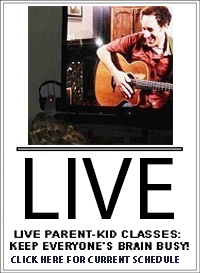Whatever your evaluation of salsa’s emergence as a cultural phenomenon–unifying pan-Latin movement? self-serving marketing concept? both?–the multiple roots of the music itself are in less dispute. Salsa music is a mishmash of Latin genres, a jumble of sounds and Spanish sensibilities. You may see salsa as the elevation of those genres or is as Latin music’s lowest common denominator, but as a genre itself it stands on the shoulders of much marvelous music, such as:
— Cuban son: Son, which means “sound” in Spanish, powerfully forged African rhythms with instruments and folk melodies of Cuba’s Spanish community. Son music arose in the early 20th century, became known internationally in the ’30s and ’40’s when conjunto ensembles added instruments like conga drums to the mix, and fell from popularity when Cuban big bands playing a variety of styles began to draw tourist crowds in Havana the ’50s.
“Son montuno” is a subgenre of son, and the most fundamental building block in the formation of salsa. The term “son montuno” arose at the beginning of the 20th century and mainly refers to the last, quick and lively section of a son, featuring improvisation, a repeating vocal and a rousing instrumental climax. Cuban tres player ARSENIO RODRIQUEZ is credited with developing the son montuno in the 1940s, layering and interlocking specific common son melodic phrases–mainly arpeggios–performed on instruments like the tres and the piano. In class we’re going to listen to “Dame un chachito pa’ huele” by Rodriquez. [Listen to Arsenio perform “Sueltala“]
[Learn about son conjuntos | “Son de la Loma” performed in a broken-down Cuban building | Listen to clips from “Cuban Counterpoint: History of the Son Montuno” to get a sense of the form’s development and diversity]
— Cuban bolero: Cuban bolero was 19th century lyrical romantic music, performed on Mexican-style guitars to Haitian rhythms. [Bolero on the front porch stoop in Santiago de Cuba]
— Cuban mambo: In the 1930s, Cuban big band musicians added some elements of son to dance music known as “danzón” to form an up-tempo dance music called mambo. Mambo became most popular not in Cuba, but in Cuban refugee communities in New York and Mexico City. [In Havana, dancing the mambo]
— Cuban cha-cha-cha: Cuban bands started to perform the cha cha cha in the 1950’s, taking some of the syncopation out of the mambo and making it easier to dance. [Watch Damaso “Perez” Prado and his band cha cha cha in the ’50s. | And cha cha cha went global. Watch this crazy poolside (disclaimer: everyone is in bathing suits) cha cha cha dance scene from the 1964 Bollywood movie “Cha Cha Cha“]
— Puerto Rican bomba and plena:
Bomba and plena are both danceable, percussion-based musical forms from Puerto Rico, that share common musical ancestry in Africa. In the early 17th century, African slaves developed bomba as a way to express themselves through lyrics elucidating their shared struggles and through public, communal dance. Plena developed in the early 20th century as “the newspaper of the people,” using one of the sixteen bomba rhythms to underlie lyrics that addressed contemporary topics and offered much social commentary. [Learn about Bomba and Plena by visiting “Smithsonian Folkways’ Puerto Rican Bomba and Plena: Shared Traditions–Distinct Rhythms]
— Dominican merengue:
Dominican merengue evolved from Dominican folk to become infectious, mambo-inspired dance music. The Dominican Republic’s dicator Rafael Trujillo, an avid merengue dancer who, once of humble origins, had been barred from elite dance clubs, declared merengue to be the music of the people and required urban dance bands to include it in their shows. [A history of merengue | “Propaganda Merengue”]
— Colombian cumbia:
Cumbia is a form of Central and South American folk music originating from the Caribbean coast of Colombia and Panama. Cumbia began as the music for a traditional courtship ritual but over time mixed with local music all over Latin America to diverge into several sub-forms, each with its own distinct character. “Cumbia Colombiana” became a popular expression of resistance during Colombia’s struggle for independence from Spain, and
modern manifestations like cumbia villera still speak to the difficulties of “shantytown” life. [Watch cumbia Colombiana bandleader Lucho Bermudez y su Orquesta perform “La Pollera Colorá” on Colombian TV some time in the ’60s]





Comments are closed.